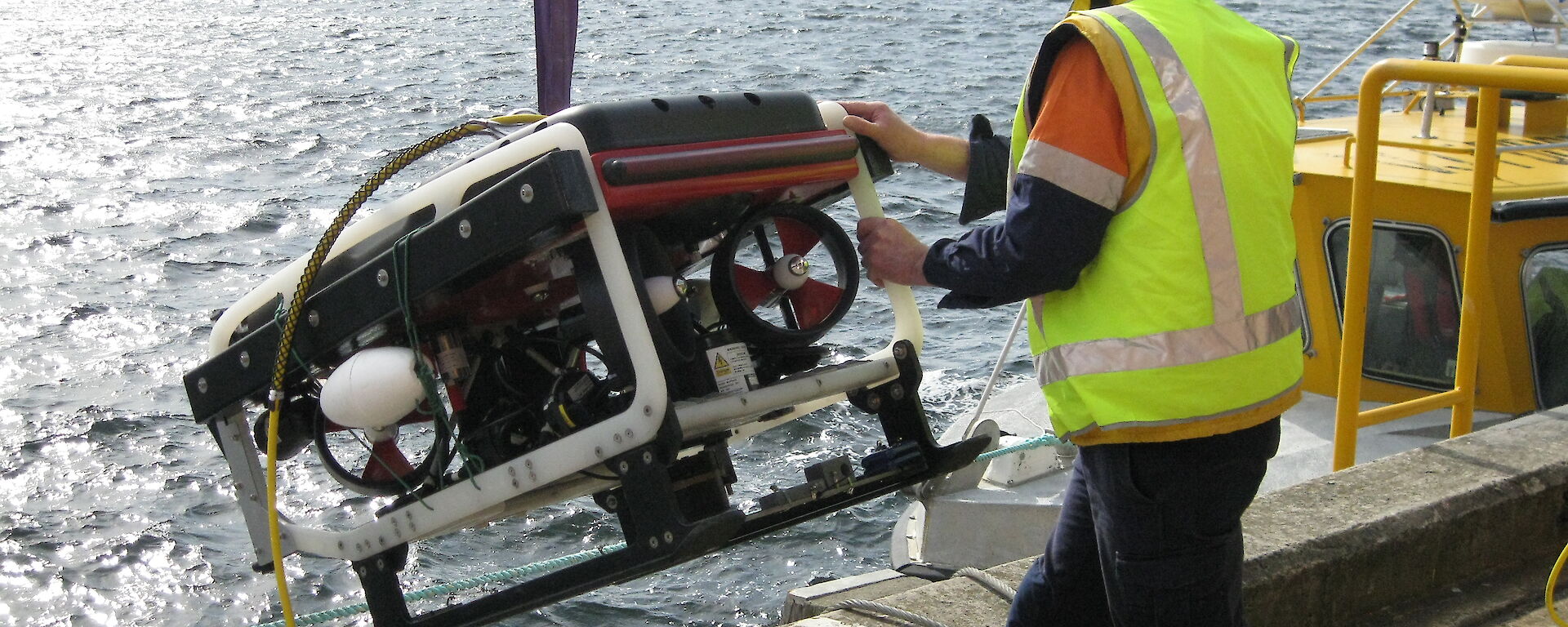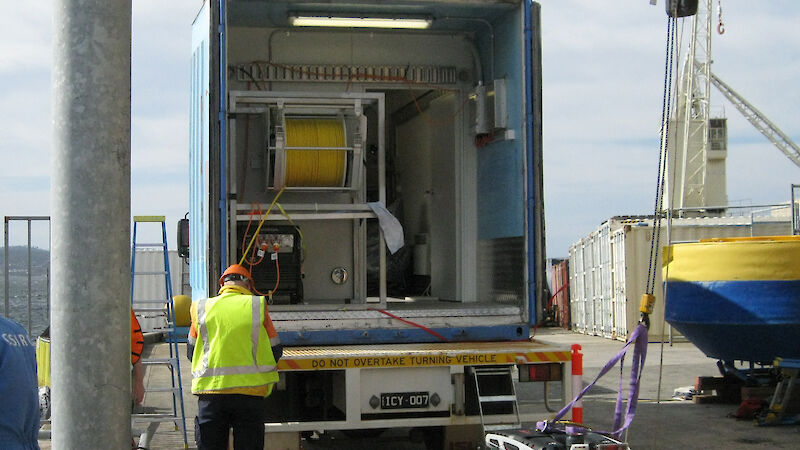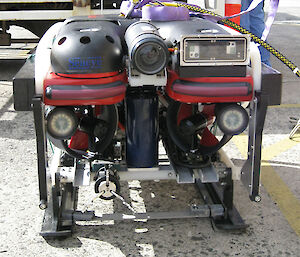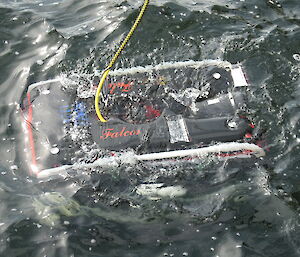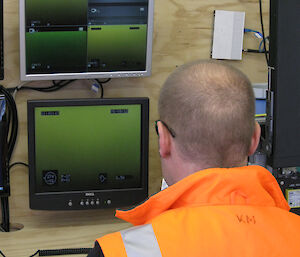6 September 2012
As the voyage countdown continues, much of the scientific equipment needed to study sea ice, snow cover, ice algae and krill, is being tested and stowed on the ship.
Because this is an international voyage, some of the equipment is coming from overseas and arriving very close to the departure date, so there may be little or no time to test it before we go. We have a skilled group of mechanical and electrical engineers and technicians travelling with us though, so hopefully they will be able to fix any glitches.
At the Australian Antarctic Division the ‘science technical support’ team has been working with scientists for the past 6–18 months to modify, custom-build and ‘Antarcticise’ various pieces of equipment, including helicopter-borne instruments, krill traps and pumps, and a Remotely Operated Vehicle (ROV).
Yesterday we took the ROV for an underwater test in Hobart’s Derwent River. The ROV is the SIPEX Chief Scientist, Dr Klaus Meiners’ principle research tool, so it is very important that everything works properly.
The ROV is a Seaeye Falcon model jointly operated by the Antarctic Climate and Ecosystems Cooperative Research Centre and the Australian Antarctic Division. The original model comes with a video camera, but for its Antarctic role it has been fitted with two stereo vision HD cameras, an upward-looking sonar (to measure the ice thickness beneath the water), a pressure sensor and a radiometer (to measure light passing through the ice). It weighs about 80 kg, is 1m long x 60cm wide x 50cm high and can operate to a depth of about 300 m.
Once we’re at an ‘ice station’ in Antarctica the ROV will be transported onto the sea ice in a heated shipping container housing all the electrical equipment, computers and monitors needed to control it. The ROV will then be deployed through a hole in the ice but will remain tethered to a 400 m-long cable. Klaus and the science technical support team will drive the instrument in a ‘lawn mower’ pattern at 1–2 m under the sea ice, watching its progress from a computer screen and collecting information about sea ice algae and sea ice thickness, and searching for krill to film and sample.
After a small technical problem at the Hobart wharf yesterday morning, which was soon sorted by the attending engineers, the ROV was lowered from a crane into the choppy water. The team soon had it motoring out into the bay and watched from their computer screens as it descended to about 9 m into the murk.

